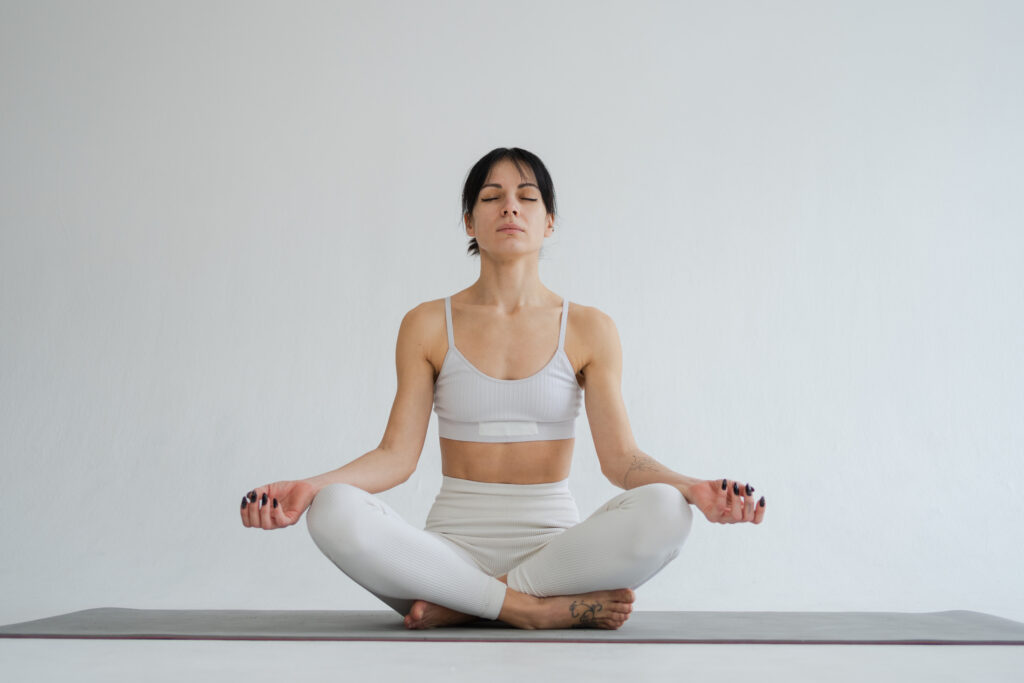Have you ever felt anxious or stressed out, and noticed that your heart rate increased, your breathing became shallow, and your muscles tensed up? These physical symptoms are signs of a hyperactive sympathetic nervous system, the body’s natural response to stress.
The good news is that there are simple and fun exercises you can do to activate the vagus nerve, a crucial component of the parasympathetic nervous system, also known as the “rest and digest” system. Stimulating the vagus nerve can promote relaxation, lower stress levels, boost immunity, and improve your physical and mental health.
In this article, we’ll explore what the vagus nerve is, why it’s crucial, the top 10 vagus nerve exercises, and the health benefits you can expect from practicing these exercises.
What is the vagus nerve?
The vagus nerve is one of the most significant nerves in the body. It is the longest nerve in your body and extends from your brainstem down to your abdomen, connecting with various organs, muscles and glands.
It is responsible for controlling many functions throughout your body, such as breathing, digestion, and immune system responses. It plays a crucial role in regulating inflammation levels in the body, which can impact your physical and mental health.
The primary function of stimulating the vagus nerve is to regulate your parasympathetic nervous system, which is responsible for your body’s “rest and digest” relaxation response. This means that when your vagus nerve is activated, it helps to slow down your heart rate, lower blood pressure, and promote relaxation.
The vagus nerve is an important component of your nervous system and plays a vital role in promoting relaxation, reducing stress, and improving your overall physical and mental health.
Why are vagus nerve stimulation exercises important?
Stress and anxiety can significantly impact your body and nervous system. When you experience stress or anxiety, your body goes into “fight or – flight response” mode, releasing hormones such as cortisol and adrenaline. This response can cause physical symptoms such as rapid breathing, increased heart rate, muscle tension, and digestive issues.
Over time, chronic stress and anxiety can lead to more severe health problems, including high blood pressure, heart disease, and mental health disorders.
How do vagus nerve exercises help?
Vagus nerve exercises can positively impact your physical and mental health by promoting relaxation and reducing stress. When you activate the vagus nerve, it sends signals to your brain to release calming neurotransmitters such as GABA and serotonin, which can help you feel more relaxed and less stressed.
Research shows that practicing vagus nerve exercises can improve heart rate variability, an essential measure of your body’s ability to respond to stress. By improving heart rate variability, you become more resilient and better able to handle stressful situations. Studies have also found that these vagus nerve exercises can reduce symptoms of anxiety and depression, improve mood, and enhance cognitive function.
Incorporating vagus nerve exercises into your daily routine can reduce stress, promote relaxation, and improve your overall physical and mental health. It’s important to prioritize self-care and take steps to manage your stress levels in today’s fast-paced world.
The top 10 vagus nerve exercises
There are various types of the vagus nerve stimulation exercises that you can try at home to help promote relaxation, reduce stress, and improve overall physical and mental health. Try some of the examples below to find out what works for you.
Breathing exercises:
There are lots of different breathing exercises. All aim to slow down your breath to stimulate the vagus nerve. A simple breathing exercise is diaphragmatic breathing, where you breathe deeply through your nose and exhale slowly through your mouth while focusing on your belly rising and falling.
You can also try alternate nostril breathing, inhaling through one nostril and exhaling through the other, switching nostrils after each breath. These deep breathing exercises are best performed in a quiet room where you can sit or lie down comfortably.

2. Mindful meditation:
There are many apps and guided meditations available that can help you start practicing this vagus nerve exercise.
One way to meditate:
- Find a quiet space where you won’t be disturbed.
- Sit comfortably with your back straight and close your eyes.
- Focus on your breath and observe your thoughts without judgment. If your mind wanders, gently bring your attention back to your breath.
- Start with just a few minutes a day and gradually increase the time as you feel comfortable.

3. Progressive muscle relaxation:
By gently tensing and releasing different muscle groups in your body, you help your nervous system learn the difference between stress and relaxation. This practice stimulates the vagus nerve while easing built-up tension you may not even realize you’re carrying.
You can start at your toes and slowly work your way up, tensing each area for a few seconds before releasing. This not only calms your body but also brings awareness to where you hold stress, giving you more control over how
4. Humming, chanting, or singing:
Humming, chanting and singing have been shown to activate the vagus nerve. Simply humming to yourself while you do your daily activities can be an easy way to incorporate this exercise into your life. Alternatively, you can try chanting “Om” or another soothing sound for a few minutes a day, or sing your favorite song while you do the dishes.
The vagus nerve, one of the longest nerves in the body, has many branches running through the torso, neck, and head. One of these branches of the vagus nerve connects to the vocal cords. This vagus nerve exercise directly stimulates the vagus nerve, which can quickly deliver a sense of calm over the body.
5. Cold-water immersion:
Cold water immersion involves exposing your body to cold water briefly, such as taking a cold shower, enjoying a dip in a cold pool, or simply placing your face in a bowl of ice water for a few seconds. This exercise can help stimulate the fight-or-flight stress response, and build resilience to stress.While cold water immersion does initially activate the fight-or-flight response of the sympathetic nervous system, it can also help to stimulate the parasympathetic nervous system to calm you.
When the body is exposed to cold water, it triggers a physiological response known as the mammalian diving reflex. This reflex causes the heart rate to slow down and blood vessels to constrict, which helps conserve oxygen and redirect blood flow to essential organs like the brain and heart.
As the body adapts to the cold water, the parasympathetic nervous system becomes more dominant, promoting relaxation and reducing stress. Studies have shown that regular cold water immersion can improve heart rate variability, which is an indicator of our body’s ability to respond to stress.
6. Grounding techniques:
Grounding helps you return to the present moment when your mind feels scattered or overwhelmed. By focusing on your senses—what you can see, hear, touch, taste, or smell—you bring your body out of survival mode and into a calmer state.
The vagus nerve responds to these mindful shifts, helping your body regulate more effectively. The next time you feel anxious, try naming five things you see, four things you feel, three things you hear, two things you smell, and one thing you taste. You’ll notice how it pulls you back into the here and now.
7. Social connection:
Spending time with people who make you feel safe and supported is one of the most effective ways to activate your vagus nerve. Warm, caring connections help regulate your nervous system, reduce stress, and build emotional resilience.
When you prioritize healthy relationships and moments of genuine connection, you’re reminding your body that it doesn’t have to stay in fight-or-flight mode. Whether it’s through a phone call, a hug, or a meaningful conversation, these moments are deeply restorative.

8. Laughing:
Laughing?! Yes, having a good belly laugh can stimulate your vagus nerve. A chuckle or a giggle won’t do it though; it has to be a full body, side-splitting laugh.
So go see a comic you like, watch a hilarious movie or TV show, or hang out with funny friends and have fun stimulating your vagus nerve.

9. Experience nature:
Whether or not you are an outdoorsy person, nature can be restorative. For this vagus nerve exercise, you don’t have to even go outside.
The main thing is to focus on something positive related to nature. That could be watching a sunrise or sunset, taking a hike, looking at pictures of the outdoors that you like, or even playing with your pet.
10. Gratitude journaling:
Journaling allows you to get your feelings out of you and onto paper. Journaling about gratitude may aid you in shifting your focus from distressing feelings to more stable ones.
Gratitude journaling does not need to be drawn out. Everyday, get up and write down three things that you are thankful for. They can be big or small, and don’t be afraid to write down something “silly”. If it makes you happy and thankful, go with it.
Overall, incorporating these exercises to increase vagus nerve stimulation into your daily routine could help bring balance into stressful life situations. Remember to start slowly and gradually increase the intensity and duration of each exercise over time.
How do you incorporate these vagus nerve exercises into daily life?
Incorporating vagus nerve exercises into your daily life can be easy and doesn’t have to take up a lot of time. The key to incorporating these exercises into your daily routine is to find what works best for you and make it a habit. By taking just a few minutes daily to focus on your breath, grounding, or practice mindfulness, you can trigger your vagus nerve to bring you back to a peaceful place.
What if these vagus nerve exercises aren’t enough?
While vagus nerve stimulation has several benefits for your physical and mental health, chronic high levels of stress and anxiety may indicate something more serious – something that may require a specialized online therapist to help you sort out.
Vagus nerve exercises can promote relaxation, reduce stress and inflammation, and improve heart rate variability. These exercises can be done in just a few minutes daily and help you feel more grounded, centered, and calm.
Even if you feel high levels of anxiety and you practice the above exercises to help manage your stress, there may still be root causes deeper than what these exercises are designed to help with.
If you would like to talk to someone about vagus nerve exercises, or what to do if they are not helping enough, don’t hesitate to call us or make an appointment. We have experienced online therapists who are ready to help you get started on your mental health journey today.
- How To Meditate For Anxiety: Discover The Top 4 Meditation Techniques To Help You Find Peace
- The Truth Behind Your High Functioning Anxiety: 5 Important Things You Might Not Know
- 9 Practical Coping Skills For Depression
- Panic Attack VS Anxiety Attack: 4 Key Differences To Tell Them Apart
- What Does Depression Feel Like? (6 Big Ways To Improve It.)







